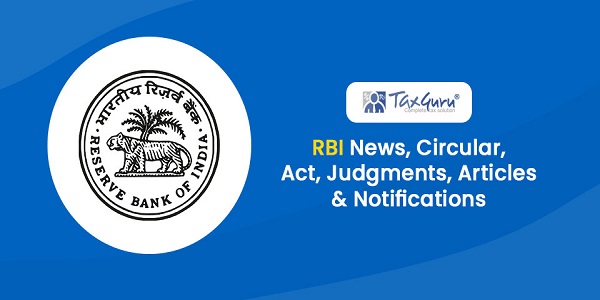
Classification of Sodium Stearoyl Lactylate Under Customs Tariff in Tamil
- Tamil Tax upate News
- January 12, 2025
- No Comment
- 18
- 32 minutes read
In re Danisco India Pvt. Ltd. (CAAR Delhi)
Customs Authority for Advance Rulings (CAAR), Delhi, analyzed the classification of “Grindsted SSL P 70 Veg,” a food emulsifying agent primarily composed of Sodium Stearoyl Lactylate. The product is manufactured through a chemical reaction involving stearic acid and lactic acid, resulting in a waxy material widely used in food products. The product’s physical properties include being a solid, white to off-white in color, with a slight fatty acid odor and insolubility in water. Its classification under the Customs Tariff was determined based on its chemical composition, physical properties, and manufacturing process.
CAAR concluded that the product does not qualify as a “separate chemically defined compound” as per Chapter Note 1 to Chapter 29 of the Customs Tariff. It contains multiple molecular species, including residual mono- and diglycerides. The product was classified under Chapter 34, specifically under tariff heading 3404, which includes artificial waxes and prepared waxes of organic origin. This classification was supported by the product’s compliance with criteria such as its waxy character, drop melting point above 40°C, and viscosity requirements as outlined in the Harmonized System of Nomenclature (HSN). The ruling emphasized the use of scientific opinions and technical guidelines for accurate classification.
RELEVANT TEXT OF THE ORDER OF CUSTOMS AUTHORITY OF ADVANCE RULING, DELHI
Analysis and Conclusion
5. The Applicant is importing the products Grindsted SSL P 70 Veg’ for the purpose of trading. The product, Grindsted SSL P 70 Veg is a food emulsifying agent. An emulsifier enables the creation of uniformly blended products (emulsions) from ingredients which, because of fundamental differences in their physical and chemical properties are immiscible. The chemical name of the product is Sodium Stearoyl Lactylate. The subject product offers the following benefits:
i. Improves emulsion stability, whitening effect, and mouthfeel when used with monoglycerides in coffee whiteners; ii Increases stability against feathering in coffee whiteners; iii. Combines dough strengthening and crumb softening
5.1 The subject product is mainly composed of Sodium Stearoyl Lactylate. Palm oil is the raw material used for the manufacturing of the subject product. Palm oil contains different types of fatty acids (stearic acid). During the manufacturing process, Fatty acid (Stearic acid) is made to react with Lactic Acid in presence of Caustic Soda (NaOH) in an equilibrium esterification reaction that yields Sodium Stearoyl Lactylate. The subject product may contain other constituents such as un-neutralized palmitoyl and stearoyl lactific acid, free fatty acids, free lactic acid etc.
5.2 The subject product i.e., Grindsted SSL P 70 Veg is food emulsifying agent made from palm oil. having a waxy character. The ingredient of the same is as under: –
| PARTICULARS | GRINDSTED SSL P 70 VEG | QUANTITY |
| Ingredient | Sodium Stearoyl Lactylate (E481) | Approx 100 % |
5.2.1 E numbers: It is a system of codes used within the European Union (EU) to identify food additives. The “E’ stands for “Europe” and these numbers were established by the European Food Safety Authority (EFSA) and the European Commission. E400—E499 (thickeners, stabilisers. emulsifiers).
5.2.2 INS Number: It stands for “International Numbering System,” are used by the Codex Alimentarius Commission. The Codex Alimentarius is a joint program of the Food and Agriculture Organization (FAO) and the World Health Organization (WHO). established to develop food standards, guidelines, and related text. Food additives in India are labelled with INS numbers, and these numbers are regulated and approved by the Food Safety and Standards Authority of India (FSSAI). In the instant case INS number for the subject product is INS 481(i).
5.3 The subject product exhibits the following physical properties
| Property | Description |
| Physical state | Solid |
| Colour | White to off-white |
| Odor | Slight fatty acid |
| Water solubility | Insoluble in water |
5.4 As per, 46th Joint FAO/WHO Expert Committee on Food Additive (“JECFA Report”) report published in FNP 52 Add 4 (1996), which has analysed the subject product. JECFA report defines the subject product as:
A mixture of sodium salts of stearoyl lactific acids and minor proportions of other salts of related acids, formed by the esterification of commercial stearic acid with lactic acid and neutralized to the sodium salts; may contain unnaturalized palmitoyl and stearoyl lactific acid. free fatty acids (principally palmitic and stearic), free lactic acid and salts of fatty acid esters of lactic acid and polymerized lactic acid.
5.5 The subject product contains more than one molecular species, viz., stearoyl lactific acids, other salts of related acids, etc. For this reason, the subject product cannot be said to be a separate chemically defined compound given in Chapter Note 1 to Chapter 29. Additionally, there is not a fixed chemical formula of the Sodium Stearoyl-2-Lactylate, as “R” can either be Cl 7H35 or C15H31 and “n” can range from 1-2.Hence, it is not removed from the ambit of Chapter 34.
5.6 Similar understanding can be developed from Scientific Opinion on the re-evaluation of sodium stearoyl-2-lactylate (E 481) and calcium stearoyl-2-lactylate (E 482) as food additives done on request of European Commission, Question No EFSA-Q-2011-00568 and No EFSA-Q-2011-00569, adopted on 13 March 2013. Determined that Sodium Stearoyl-2-Lactylate is waxy in consistency. Relevant portion of Report is extracted below:
Other components pre–sent in the product may include sodium/calcium salts of fatty acids or free fatty acids (15-20 %), non-neutralised stearoyl lactic acid, sodium/calcium lactate, free lactic acid or polymers of lactic acid. (Boutte and Somerson, 2004; Burch et al., 2007; Austen Business Solutions, 2010, unpublished report). In addition, the actual fatty acid profile of SSL and CSL will depend upon the source of the fatty acids. Commercial stearic acid contains variable range of stearic (C18) and palmitic acids (C16) (see section 2.3).
5.7 As, per above mentioned Scientific Opinion Both SSL and CSL are normally white to pale yellow, ivory-coloured, waxy materials of a consistency determined by the fatty acids.
5.8 Corning to find the classification of the product, the Tariff is aligned, up to the 6-digit level, with the Harmonized System of Nomenclature (“HSN”) issued by the World Customs Organization (`WC0′). It has been held by the Hon’ble Supreme Court in the case of Collector of Customs, Bombay Vs. Business Forms — 2002 (142) ELT 18 that the HSN Explanatory Notes aid in the interpretation of the Headings of the Tariff and may be used as a safe guide for the same. The classification of the goods imported into India is to be determined based on the General Rules of Interpretation (hereinafter referred to as the “GRI”) set out in the Tariff. As per Rule 1 of the GRI, classification of the imported products shall be determined according to the terms of the headings and any relative Section or Chapter Notes and, provided such headings or Notes do not otherwise require, according to the remaining Rules of the GRI.
5.8.1 Given that it has a wax character, it may be classified under Chapter 34, which covers. inter-alia, Artificial Waxes and Prepared Waxes. Under Chapter the relevant customs tariff heading (“CTH”) that is most relevant to the classification of the subject product is CTH 34.04, which concerns Artificial waxes and prepared waxes.
5.8.1.1 For ease of reference, the chemical composition and the physical property of the subject product is captured below:
Grindsted SSL P 70 Ve
| PARTICULAR | DESCRIPTION | QUANTITY |
| Ingredient |
Sodium Stearoyl Lactylate (E481) | Approx 100% |
| Form | Powder, Beads | – |
| I Physical State | Solid | – |
| Colour | White to off-white | – |
| Odor | Slightly fatty acid | – |
| Water Solubility | Insoluble in Water | – |
5.8.2 Before examining the classification of the subject product under CTH 3404, it is relevant to visit the Notes to Chapter 34. As per Note 1 to Chapter 34 separate chemically defined compounds” are excluded
(1) This Chapter does not cover
(a) “”
(b) Separate chemically defined compounds: or.
(c) ****
5.8.3 Additionally, as per Note 5 to Chapter 34, “artificial waxes and prepared waxes” applies to:
(a) Chemically produced organic products of waxy character, whether or not water-soluble.
(b) ***
(c) ***
5.8.4 Further, the HSN Explanatory Notes to Heading 3404 provide for its applicability as under:
This heading covers artificial waxes (sometimes known in industry as “synthetic waxes”) and prepared waxes, as defined in Note 5 to this Chapter, which consist of or contain relatively high molecular weight organic substances and which are not separate chemically defined compounds. These waxes are
(A) Chemically produced organic products of a waxy character, whether or not water-soluble. Waxes of heading 27.12, produced synthetically or otherwise (eq., Fischer-Tropsch waxes consisting essentially of hydrocarbons) are however excluded. Water-soluble waxy products having surface-active properties are also excluded (heading 34.02).
(B) ***
(C) ***
……
The waxes of paragraphs (A), and (C) above must have:
(1) a dropping point above 40 °C; and
(2) a viscosity. when measured by rotational viscometry, not exceeding 10 Pa.s (or 10,000 cP) at a temperature of 10 degrees C above their dropping point.”
5.8.5 On a combined reading of Note 5 (a), Note 1 (b) to Chapter 34 and the HSN Explanatory Notes to heading 3404, the following essential requirements needs to be fulfilled in order to classify a product under the said heading:
a. The product must not be a separate chemically defined compound;
b. The product must be chemically produced organic product;
c. The product must not be covered within the scope of CTH 271:
d. The product must have waxy character;
e. The product must have a drop melt temperature of above 40°C,
f. The viscosity of the product must not exceed 10 Pa.s at 10°C above the drop melting point.
5.8.6 The physical and chemical characteristics of the subject product are analysed against each of the above conditions, as below:
I. The subject product is not a separate chemically defined compound
5.8.6.1 The term separate chemically defined compounds has been defined in the Explanatory Notes to the Harmonized System of Nomenclature published by the World Customs Organization (hereinafter to be referred to as “Explanatory Notes”) for Chapter 29 (Organic Chemicals). For ease of reference the relevant definition is reproduced below:
(A) Chemically defined compounds.* (Chapter Note 1):
A separate chemically defined compound is a substance which consists of one molecular species (e.g., covalent or ionic) whose composition is defined by a constant ratio of elements and can be represented by a definitive structural diagram. In a crystal lattice, the molecular species corresponds to the repeating unit cell.
As already mentioned, JECFA Report provides that the subject product is not a chemically defined compound due to the presence of residual mono- and diglycerides and glycerol.
II. The Subject product is waxy in nature
5.8.6.2 As per the scientific opinion referred, the subject product is waxy in character
III. The product must be chemically produced organic product
5.8.6.3 As per the manufacturing process of the subject product, it is manufactured by a chemical reaction of fatty acid (stearic acid) with lactic acid in the presence of caustic soda (NaOH) in an equilibrium esterification reaction. The resulting contains a carbon—hydrogen bond, which is characteristic of an organic product. Hence, the subject product is a chemically produced organic product.
IV. The product must not be covered within the scope of CTH 2712
5.8.6.4 CTH 2712 covers Petroleum Jelly, Paraffin Wax. Microcrystalline Petroleum Wax or other mineral waxes. A simple analysis shows that the subject product is not any of these waxes. Hence, the subject product is not covered within the scope of CTH 2712.
V. Other conditions
5.8.6.5 A mentioned above and on physical examination of the subject product shows that it has a waxy character.
5.8.7 The Applicant confirms that the subject product has a drop melt temperature of above 40°C. The Applicant also confirm that the subject product has a viscosity that does not exceed 10 Pa.s at 10°C above the drop melting point.
5.8.8. The fulfilment of above by the subject products is discussed herein below:

In view of the above, as the subject product fulfils all the conditions mentioned in Note 1(b), and Note 5 to the Chapter 34, hence the subject product merits classification under CTH, 3404.
5.8.9 Now, coming to the 8-digit classification, reliance must be placed on GRI Rule 6 which states that the classification of goods in the sub-headings of a heading shall be determined according to the terms of those sub-headings and any related sub-heading Notes and, mutatis mutandis, to the above rules, on the understanding that only sub-headings at the same level are comparable. For the purposes of this rule the relative Section and Chapter Notes also apply, unless the context otherwise requires” Therefore. upon application of GRI Rule 6 read with GRI Rule 1, the classification of subject products must be determined according to the terms of sub-headings. In view of the above, reference must be made to the description mentioned at sub-heading level. ft is also pertinent to mention that as per GRI, descriptions of the goods provided under “-“(single dash) are first to be considered for sub-classification under a heading first, before proceeding to further classify under “- (double dash). Articles whose description are preceded by a “-(triple dash) or “—-” (quadruple dash) are sub-classifications of the immediately preceding single dash or double dash, as the case may be.
5.8.10 Therefore. the classification of the subject goods must be first determined at the single-dash level. In This regard it is evident that CTH 3404, has been sub-divided into;

5.8.11 The subject product is not made up of Polyethylene glycol (PEG). Accordingly, the subject product will be classified under the residuary entry, i.e.. CTSH 3404 90 which reads as Other”. Now, upon perusal of the single-dash entry- “Other”. The entry is sub-divided into the following:
| CTH | Description | Unit Rate of Duty | ||
| (1) | (2) | (3) | (4) | |
| 34090 | -Other | |||
| 34049010 | —Sealing wax (including bottle sealing wax) in sticks, cakes or similar forms | Kg | 10% | |
| 34049020 | — Polyethylene wax | Kg | 10% | |
| —Artificial waxes (including water soluble waxes ) prepared waxes, not emulsified or containing solvents | ||||
| 34049090 | —Other | Kg | 10% | |
5.8.12 Basis the understanding of the facts and the analysis discussed so far, it is clear that 34049010 and 34049020 are excluded. Now moving to the next — dash i.e. Artificial waxes (including water-soluble waxes) prepared waxes, not emulsified or containing solvents”. The subject product is in the nature of artificial wax, not soluble in water. Further, the product in is as imported form is neither emulsified nor contains solvents. Accordingly, the subject product appears to fall within the scope of “Artificial waxes (including water-soluble waxes) prepared waxes, not emulsified or containing solvents”.
5.8.13 The said entry is further sub-divided under:
| CTH | Description | Unit | Rate of Duty |
| (1) | (2) | (3) | (4) |
| 34049031 | —-Poly brominated biphenyls | Kg | 10% |
| 34049032 | —-Poly chlorinated biphenyls | Kg | 10% |
| 34049033 | —-Poly chlorinated terphenyls | Kg | 10% |
| 34049039 | —-Other | Kg | 10% |
5.8.14 The subject product has not undergone bromination or chlorination during its production. We understand that the subject product in its ‘as imported’ form contains neither bromine nor any chlorine. Thus, the subject product is not classifiable under CTIs 34049031. 34049032 or 34049033. Hence, the subject product merits classification under CTI 3404 90 39.
5.8.15 As per the comments of the Port Commissionerate, the product is mainly composed of Sodium stearoyl lactylate (SSL), and appears to be an ester of stearic acid, which is covered under CTH 2915. However, as stated by the importer, the product not being a separate chemically defined compound, it is not classifiable under Chapter 29. It appears that the imported product may be classifiable under CTH 34.04 depending on whether it meets the character of artificial waxes or otherwise. The compliance of the imported product to the various explanatory notes to CTH 34.04 need to be examined.
5.8.16 The subject product has a waxy character. Reliance for the same is placed on the Scientific Opinion prepared at 46th JECFA Report on the re-evaluation of sodium stearoyi-2-lactylate (E481) and calcium stearoyl-2-lactylate (E482), as food additives done on the request of the European Commission, Question No. EFSA-Q-2011-00568 and No. EFS-2011-00569, adopted on 13.03.2013 (hereinafter referred to as the “EFSA Report”), which describes both, Sodium Stearoyl Lactylate and Calcium Stearoyl Lactylate as “normally white to pale yellow, ivory-coloured, waxy material of a consistency determined by the fatty acid.
5.8.17 Considering the subject product contains Sodium Stearoyl Lactylate and has a waxy appearance it shall be classified under Chapter 34, which covers, inter alia, “Artificial Waxes and Prepared Waxes” under Customs Tariff Heading (hereinafter referred to as “CTH”) 3404.
5.8.18 Further, relevant Chapter Notes and Harmonised System of Nomenclature Explanatory Notes (hereinafter referred to as “HSN EN”) which have been held to be a safe guide for the determination of the correct classification in a catena of judgments, are extracted below for ready reference:
“Chapter Note 1 This Chapter does not cover:
(a) ….
(b) separate chemically defined compounds; or
(c) ……
“Chapter Note 5 In heading 3404, subject to the exclusions provided below, the expression “artificial waxes and prepared waxes” applies only to:
(a) Chemically produced organic products of a waxy character, whether or not water-soluble;
(b) ….
(c) products of a waxy character with a basis of one or more waxes and containing fats, resins, mineral substances or other materials…”
HSN EN to CTH 3404:
This heading covers artificial waxes (sometimes known in industry as “synthetic waxes”) and prepared waxes, as defined in Note 5 to this Chapter, which consist of or contain relatively high molecular weight organic substances and which are not separate chemically defined compounds. These waxes are :
(A) Chemically produced organic products of a waxy character, whether or not water-soluble. Waxes of heading 27.12. produced synthetically or otherwise (eq. Fischer-Tropsch waxes consisting essentially of hydrocarbons) are, however, Water-soluble waxy products having surface-active properties are also excluded (heading 34.02).
(B) …..
(C) Products of a waxy character with a basis of one or more waxes and containing fats, resins, mineral substances or other materials. Unmixed animal or vegetable waxes, whether or not refined or coloured, are, however, excluded (heading 15.21). Unmixed mineral waxes or mixtures of mineral waxes, whether or not coloured are also excluded (heading 27.12) ..
The waxes of paragraphs (A), and (C) above must have:
(3) a dropping point above 40 °C; and
(4) a viscosity, when measured by rotational viscometry, not exceeding 10 Pa.s (or 10 000 cP) at a temperature of 10 degrees C above their dropping point.
Apart from the exclusions mentioned above, the heading does not cover :
(f) Mixtures of mono-, di- and tri-. fatty acid esters of glycerol. not having the character of waxes (heading 38.24).”
5.8.19 Each of the above-listed conditions are dealt with specifically as under:

5.9 In light of the above, it is submitted that the subject product fulfils all the conditions set forth by the combined reading of Chapter Note 1(b) and 5(a) to Chapter 34 and the HSN EN to be adequately covered under CTH 3404. The subject product is thus, not classifiable under CTI 3404 90 31, 3404 90 32, 3404 90 33 and is therefore, correctly classifiable under CTI 3404 90 39.
6.a. Question: Whether the products in question in the present application are classifiable under Tariff Item 3404 90 39?
Answer: Yes.
b. Question: If the answer to the above question is in the negative, then what would be the correct classification of the products mentioned above under the Customs Tariff of India? Answer: Not Applicable
7. I, rule accordingly.




